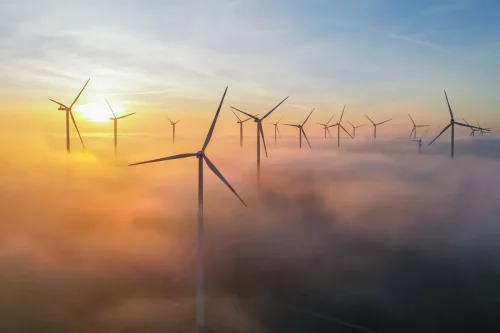Experts have prepared practical ways to solve the 4 biggest decarbonization challenges for electric utilities to ensure reliable and stable energy.
The industry needs the critical need to balance growing energy demand and environmental pressures with effective climate change solutions Utility Dive.
The article noted that, according to the US Energy Information Administration, electricity consumption in 2020 amounted to about 3.8 trillion kWh. This is 13 times higher than it was in 1950, and the figures will grow exponentially in the coming years.
Placement of new solar and wind power plants
“Creating renewable energy is more difficult than it looks. Finding facilities comes with challenges such as community opposition through local aesthetics and disruption of the environment and recreation,” it said.
NIMBY (Not In My Backyard) is an influential source of opposition. So locals are banding together to prevent obstruction of offshore viewing in rich coastal areas that are needed to support offshore wind farms. Fans of NIMBY believe that this power can negatively affect fishing, sports and recreational activities such as sailing, water skiing and swimming.
These issues should be taken into account when looking for renewable energy facilities.
Maintaining continuous availability of generating capacity
The ability to produce stable and reliable electricity is a challenge both regionally and nationally. After all, the operation of wind and solar power plants depends on a constant level of wind speed and solar periods, as well as on regional problems.
So the southwest of the USA is the ideal place for large commercial solar panels, and the midwest is the best place for wind generation, since the wind level is constant throughout the year.
"Night periods and cloudy days virtually eliminate solar farms as a constant source of energy, while the lack of available winds affects the reliability of wind as a base load source for power generation," the article says.
Turnaround from current energy usage patterns
In the past 20 years, utilities have been actively involved in normalizing energy consumption curves.
Consumption regulation policy included:
- Use time measurement to encourage customers to use high-energy devices at night;
- Installation of energy monitoring devices on consumer equipment with high usage, so that the enterprise can reduce energy demand during periods of peak use;
- Charging electric vehicles at night.
The fundamental changes taking place in the way energy will require utilities to change their energy consumption patterns during periods of low or no sun and reduced wind levels.
Using government support for new electrical infrastructure
With the government's proposed injection of funds to build and upgrade infrastructure, utility managers will be ideally positioned to dramatically improve the reliability of the US electrical grid.
Utilities will engage in aggressive transmission line construction projects to ensure efficient distribution of power across multiple state-owned lines. This expanded transmission and distribution system will dramatically increase the need to accurately document the location and details of new utility assets for current tracking and future analysis needs.
Energy leaders should look for advanced technologies to give them a solution for just this purpose. Manual field data collection should be replaced by digital workflows to keep up with the industry and keep renewables in the modern era.
Sophisticated building technologies can create consistency and standartization to help utilities scale, improve data integrity to meet the data needs of operating systems such as geographic information system and ADMS, and act as a single source for the entire organization.
Utilities will be able to manage the construction of the US electricity grid with advanced technology resources and develop a sustainable model based on renewable energy production.
Recall power company of Portugal reduce production emissions and sales.
As EcoPolicy reported earlier, a bill on introduction of SWAM.





